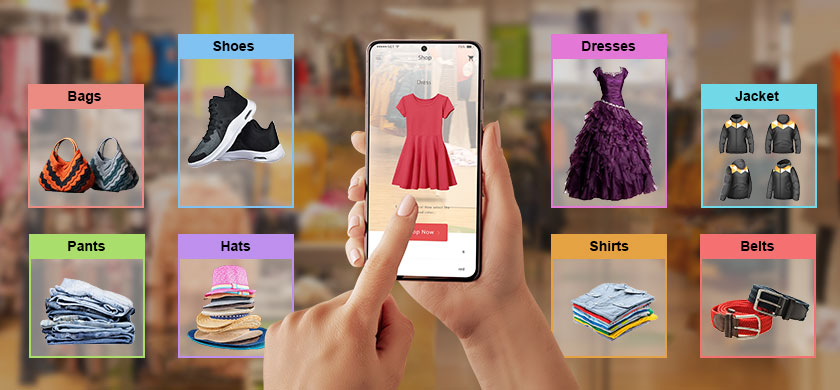Smart technology is generating massive amounts of data. Smartphones, smart accessories, smart home technology, machines, and industrial equipment are producing a constant, growing stream of data.
Businesses need improved ways of effectively managing all of their data to obtain value from it and utilize it to answer critical questions and support specific objectives. Data entry processes, a critical foundation for any data and analytics infrastructure, are changing to support the evolution of smart technologies and constantly generated data.
This evolution of data and technologies is leading to a digital disruption in data and analytics processes, including data entry. Smart technologies like the Internet of Things (IoT), Artificial Intelligence (AI), Machine Learning, Smart Data, and Cloud Computing have applications that enhance and transform data and analytics processes.
To accommodate the new intelligent landscape of smart digital technologies, data entry methods and processes are being reshaped, improved, and impacted in a variety of positive ways. This is enabling organizations to take advantage of faster, more cost-effective, and secure forms of data entry that will, in turn, affect their entire data and analytics operations.
Smart Technologies Impacting Data Entry
Intelligent technologies like AI, Machine Learning, Cloud Computing, and IoT are cognitive and affect the speed and accuracy of data entry processes. There is less room for human error, and it’s replacing the manual data entry processes that are becoming more obsolete, especially in enterprise-level environments.
The following smart technologies are affecting and altering data entry processes:
IoT: The Internet of Things is creating a connected network of data between people, devices, the internet, and businesses. Sensors that are embedded in objects, such as smartphones or tablets, and wearable technologies, connect to the internet and produce data. Gartner, Inc. predicts that the number of connected devices will reach 20.4 billion by 2020.
- IoT expands and increases the number of data sources, and enables data entry to become mobile through location-based
Cloud Computing: The distribution of on-demand computing services over the internet is changing IT infrastructures and enabling service providers to offer scalable, agile data entry solutions.
- Businesses can benefit from data entry based cloud computing services instead of managing the complexity of maintaining their data and analytics infrastructure.
AI and Machine Learning: AI and Machine Learning technologies are enabling processes like data entry to become faster, more responsive, and more secure. It automates processes and reduces the potential for human error in data entry processes by effectively managing a typically repetitive task.
- Machine Learning’s ability to recognize patterns in data is enhancing the accuracy level and data quality in data entry processes, as well.
Intelligent Technologies Improving Data Entry Processes
Intelligent technologies are impacting and improving data entry processes in several distinctive ways. As mentioned above, smart technologies and capabilities like IoT, Cloud Computing, AI and Machine Learning are drastically altering data entry and facilitating a more accurate and user-friendly approach to these processes.
- Automation: Automated data entry leads to better quality data and reduction of human error.
- Speed: Data entry processes are faster and can manage large quantities of data from invoice forms, hard copy documents, digital files, and more.
- Ease of Use: Intelligent technologies like AI and ML change the way businesses deal with data entry. Data entry systems and operations are streamlined, simplified, and designed to aid in the human component, making it user-friendly.
- Agility: Ability to scale data entry processes, utilize innovative data entry techniques, and grow with operating models.
- Specialization: Businesses want specialization in data entry processes to help them meet their business goals and industry-specific
- Connectivity: Data entry services are improved by the connectivity of automated, intelligent solutions like Cloud, for example, enabling data entry to be more customer-centric. Able to manage remote data entry more effectively, and receive client data without worrying about limited network availability.
Data Entry Is Evolving to Support Smart Technologies
Data Entry is changing and adapting to digital transformation and providing businesses with intelligent solutions in the form of innovative and compelling new forms of data entry. Data entry is being disrupted by smart technologies and accelerating the methods used to collect and enter data into various systems.
Intelligent Capture: Digital transformation initiatives have affected data entry in several key areas, most notably Intelligent Capture that replaces template based data extraction and data entry with a form of cognitive capture using text analytics and Natural Language Understanding. It provides both short-term and long-term benefits for data entry processes:
- Improved accuracy and security
- Automation
- Improvement in compliance
- Adaptability to fluctuations in data entry volumes
- Reduction of paper and hard copy based data entry
- Shorter cycle time
Mobile Data Entry: Digital mobile forms are a new solution for smart data entry. It’s basically a field service solution for data entry in which data can be collected on tablets, mobile phones, and other digital mobile devices while in the field. Manual forms of data entry cause valuable data to be at risk for potential loss or human error. This enables data to be instantaneously entered through data entry applications, systems, and workflows.
- Real-time data entry: Live data entry means faster responsiveness and improved flexibility for businesses.
- Availability: Mobile data entry is readily available across the value chain to all personnel, including the decision makers.
- Automatic Calculation: Form fields can be filled in accurately and quickly with all necessary, relevant data.
Robotic Process Automation (RPA): RPA is a form of intelligent Automation, which is a new method of smart recognition technology that provides automation and improved forms of data entry and processing, handling complex documents that include handwritten text and printed text.
- Cost-Effectiveness: Intelligent automation can equate to a savings of 40-75%.
- Script Routine Tasks: Data entry tasks that are typically manual, high volume, rule-based, and repetitive are automated.
- Application Interaction: RPA can email attachments, complete e-forms, record and re-key data, and numerous other actions typically performed by humans during data entry processes.
- Automation: Data entry processes such as managing bills, invoices, forms, letters, and more, are automated with increased speed and accuracy.
Excellence in Data Entry
Generate new business opportunities, and benefit from the enhanced accuracy, speed, and scalability of data entry that’s augmented by smart technologies. With data entry that’s supported by modern, digital technologies, organizations are better able to obtain quality data that’s specialized per their industry, business model, and needs.
Data Entry Outsourced (DEO) has pioneered industry standards for excellence in data entry practices. With advanced tools and smart data entry technologies to refine and customize data entry processes, businesses across industries are benefitting from the scalability, affordability, and versatility of enhanced data entry services provided by DEO.
– DataEntryOutsourced




